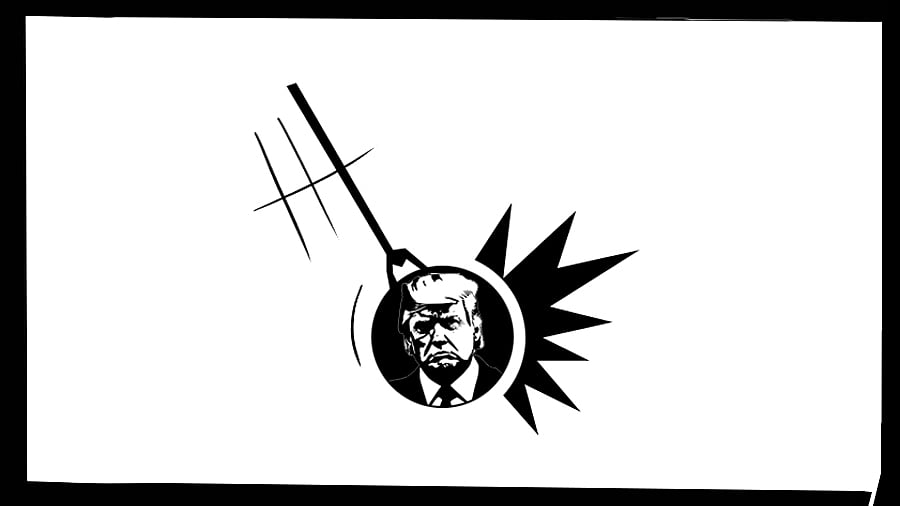
The recent meltdown involving Donald Trump and Volodymyr Zelenskyy is indicative of Trump’s shock-and-awe policy and its potential influence in shaping an emerging world order. Trump’s messaging to Zelenskyy – in no unclear terms and played out to the media – projected US power to the world and disregarded Ukraine’s interests as a sovereign state. His policy of reciprocal tariffs also appears to be in line with this disruptive doctrine. The position taken by the Trump administration points to a US alignment with the Kremlin and a shift away from Europe and democracies. Is this the way the new president wishes to make the US great again?
Vladimir Putin is focused on regaining control over some of the erstwhile USSR states and preventing the expansion of NATO eastwards. The occupation of Crimea in 2014 and the ongoing Ukraine war are the two vital links in his strategy chain. Control of Ukraine’s Donbas area with its rare earth mineral deposits would strengthen the Russian economy. Russia will aim to deny Ukraine Black Sea access and other key resources, thereby forcing it to capitulate. Will the US be able to stop Russia?
With the US shifting its pivot, Europe and other US allies sheltered under the US security umbrella since the end of WWII are vulnerable. Leaders of the European Union and NATO have been trying to figure out the way forward. The recent visit of Emmanuel Macron to the US witnessed handshakes and general bonhomie. Did it lead to change? Friedrich Merz, the newly elected leader of the Christian Democratic Union in Germany, has raised doubts on the future of NATO and demanded an upgrade in the European defence, signalling a potentially tectonic shift in Europe’s dependence on the US.
The rise of Russia and China, both militarily and economically, has challenged the US’ hegemony as a global force. Russia’s ability to break the strangulation of US economic sanctions during the war has displayed its strength. China’s rapid progress in advanced military equipment, economic growth, and technological development has also challenged the US dominance. On the other hand, a trillion-dollar fiscal deficit and dwindling industrial production don’t augur well for the US economy. The tariff war unleashed by the Trump administration is aimed at reinvigorating the industry and keeping the US economy in pole position. Will it work? The world is on the edge.
Reportedly, Pakistan supplied ammunition and material worth $364 million to Ukraine, through two US companies; the US, in return, supported the IMF loan of $7 billion to Pakistan to tide over its economic crisis. Now, the Trump administration has granted aid of $397 million to Pakistan for the upgrade of its F16 fleet, much to Indian consternation. On the Bangladesh front, Sheikh Hasina was forced to flee the country in September 2024 and make way for an interim government under Muhammad Yunus, purportedly supported by the US. Despite the US denial, it is believed that the US Deep State triggered Hasina’s ouster for not conceding to the US the control of Saint Martin Island in the Bay of Bengal. With the change in guard, Bangladesh has started cosying up to Islamabad, to India’s discomfort.
India and the security scenario
India has maintained a diplomatic middle path in this war. Prime Minister Narendra Modi, right from the time he visited Moscow in September 2022 and later, during his visit to Ukraine and other European nations, has enunciated that ‘this is not the time for war’. The period also witnessed the rise of QUAD to make the Indo-Pacific region free, open, progressive, and inclusive. The QUAD’s foreign ministers’ meeting held in January this year, after Trump took charge, also signalled the continued importance India gives to the US in its strategic map. However, the US’ $364 million defence aid to Pakistan has sent confusing signals to India.
The signs of old bonhomie between Trump and Modi during their recent meeting at the White House and an offer of the F35 sale don’t point towards any significant shift in favour of India. On the contrary, Trump’s tariff war has sent the rupee tumbling vis-à-vis the dollar. Besides impacting Indo-US trade, it would result in cost escalation of our military equipment imports. The delay in supply of the F-404 engine has disrupted delivery timelines for India’s LCA Mk1A aircraft. India has large deficiencies in military equipment hardware and significant parts of its military equipment are in various stages of obsolescence. It has to be alive to the threat to national security from the aggressive and unpredictable neighbour along its eastern border.
The Ukraine war and Trump’s policies have sent clear signals that no country can fully depend on external help for critical military hardware supply or security guarantee. As per the International Peace Research Institute, India is the largest importer of defence equipment. This doesn’t speak well of the DRDO and our indigenisation programme. It is time to have a relook on Chanakya’s neeti of saam, daam, dand, bhed to find a way to accelerate indigenous defence development, propel our economy, and place our national security on a strong footing.
Disclaimer: The views expressed above are the author's own. They do not necessarily reflect the views of DH.